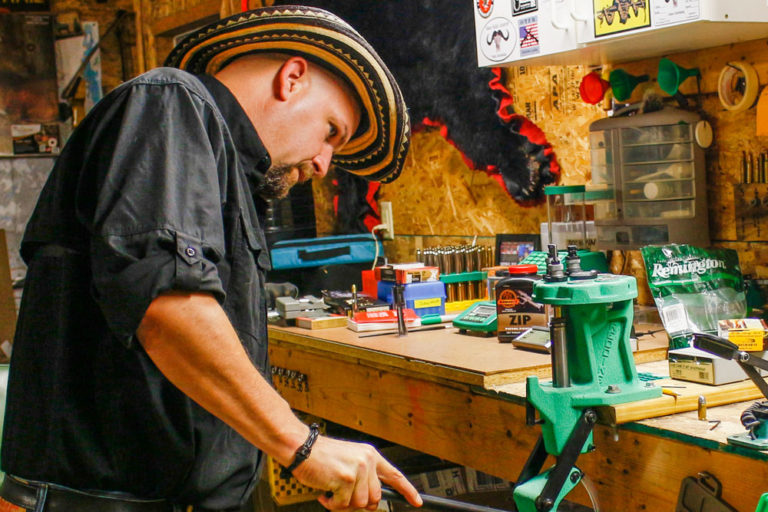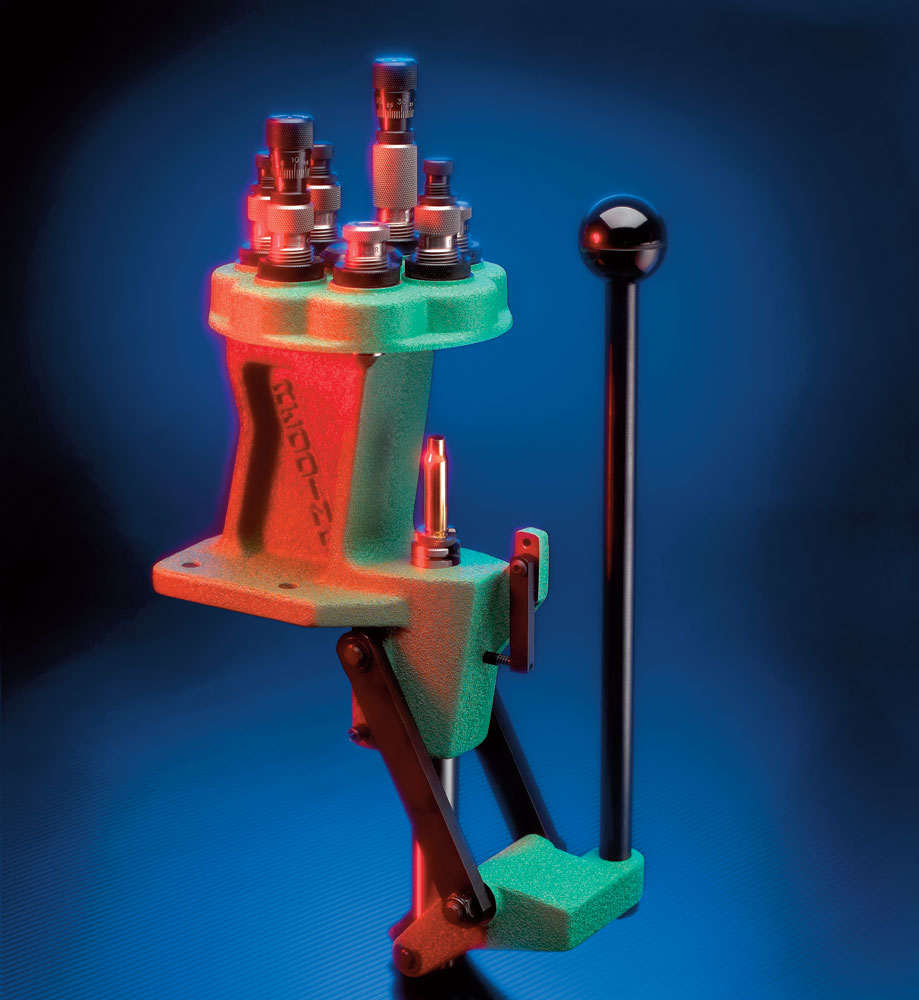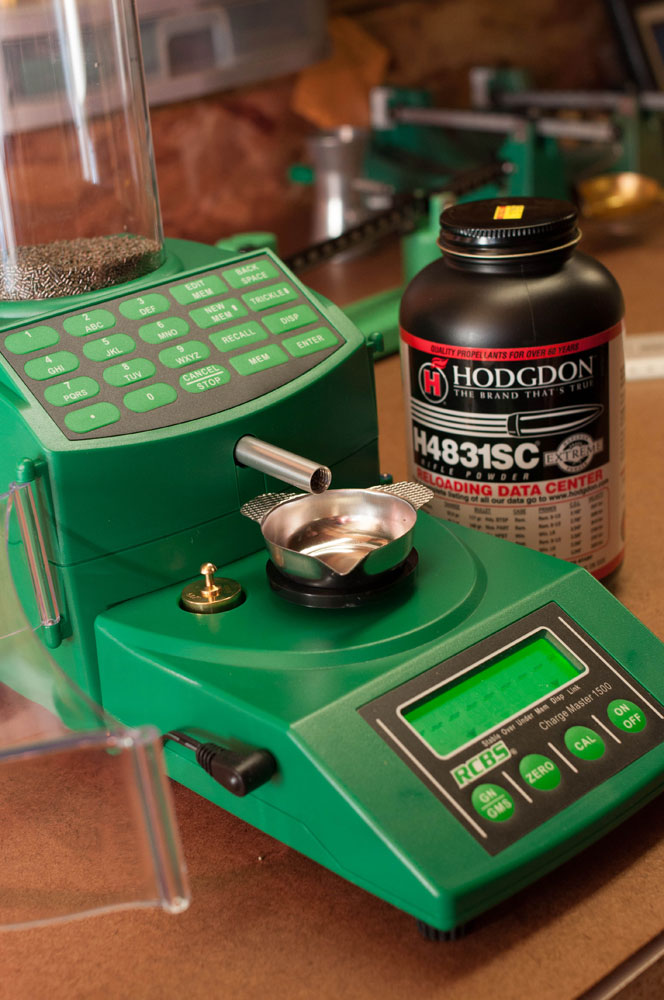
 The way you outfit your reloading bench is as personal as the way you reload your ammunition; there’s no true right or wrong answer, so long as it works for you. Invariably, you’re going to need the basic tools to get the ammunition made properly, but there are some newer tools that will definitely make the reloader’s life easier. We’ll take a look at some great options so you can make a better, more informed decision when investing your hard-earned money.
The way you outfit your reloading bench is as personal as the way you reload your ammunition; there’s no true right or wrong answer, so long as it works for you. Invariably, you’re going to need the basic tools to get the ammunition made properly, but there are some newer tools that will definitely make the reloader’s life easier. We’ll take a look at some great options so you can make a better, more informed decision when investing your hard-earned money.
You’ll need a reloading press, a means of trimming your brass cases to length, some reloading dies, a scale to weigh powder charges, and a means of measuring both cartridge cases and the overall length of assembled ammunition. It’d also be nice to have some form of eraser, to disassemble cartridges that may have some sort of flaw, whether it is a powder charge that is over or under the desired weight, or a bullet that is seated too deep. Let’s start with the press, as it is the heart of the operation.

Reloading Presses
There are two types of presses available to the reloader: the single-stage press and the progressive press. The progressive performs multiple operations at once, and is usually reserved for the advanced reloader, but you may want to end up owning one if you’re a high-volume pistol shooter; they can save an awful lot of time. Let me offer this piece of advice regarding a progressive press: Be prepared to spend a considerable amount of time setting up and maintaining your progressive; it isn’t difficult at all to throw a progressive into a tailspin and have you dismantling the press in order to realign or clean the machine. If you’re okay with that, don’t shy away from the progressive, but be aware of the level of dedication needed to keep it running smoothly. Among the progressives, I’ve liked the RCBS ProChucker 7 and the Dillon 650; both have given repeatable and accurate results.
The single-stage is a different story altogether, in that once you get it mounted to the bench, it really doesn’t require much maintenance other than a gentle cleaning and lubrication. The beauty of the single-stage press is its simplicity, and there are a number of good models available. Undoubtedly, the RCBS RockChucker was, is, and always shall be a great value, as it offers both affordability and reliability. Holding one reloading die at a time, it is a solid piece of gear that I still have on my bench. However, Redding’s T7 turret press can be a God-send to the reloader, especially if reloading for any straight-walled cartridge in a single-stage manner. Capable of holding seven dies simultaneously, you can easily rotate the turret head to get to your flaring die or crimping die while leaving the resizing die or seating die in place, saving the time spent screwing and unscrewing dies. This press is one very solid piece of gear, and well worth the investment.

Reloading Dies
These are a necessity, and you definitely get what you pay for. I like the best dies money can buy, and I’ve come to rely on both RCBS and Redding dies, as they’ve given me the best results over the years. I’ve used other brands with varying degrees of success, but these two are what I use most. Redding is more expensive, but they have the tightest tolerances I’ve seen, and the RCBS dies offer a great value to the reloader. Both offer the really nice micrometer adjustable seating dies, allowing me to provide slight, yet precise adjustments to my ammunition.

Powder Scales
A balance beam scale is an absolute necessity on any reloader’s bench no matter how much faith you place in a digital scale. I like the industry-standard RCBS 505, and the Redding Model 2; both are reliable and sturdy. However, the digital scales are wonderful, and I like both the Lyman Pro-Touch 1500 and the RCBS ChargeMaster 1500. Neither has ever let me down. I have also come to rely heavily on the RCBS 1500 ChargeMaster combination dispenser/scale, as it throws accurate powder charges time and time again, and it saves a heck of a lot of time.

Trimmers
Keeping brass cases trimmed and prepped is a must, and you’ll need a dependable means of doing so. I like the RCBS CasePrep Station, as it allows me to dial in a precise case length, and it has a set of universal jaws that holds almost any cartridge. In one unit, I can trim, chamfer, deburr and clean the primer pocket. If you prefer to do the trimming and prep work by hand, the Lee Case Trimmer uses a steel length gauge and cutter in conjunction with a shellholder for an inexpensive, yet accurate means of trimming brass. Combine this with a Wilson dual-sided chamfer/deburring tool, and you’re set. Or, if you’d like a bit more control, pick up a Redding piloted chamfer/deburring tool for a more controlled experience.

Priming Tools
You’ll definitely need to install new primers, and while most reloading presses offer a means of priming, I prefer to use a hand primer. The Lyman E-ZEE Prime universal priming tool is a great choice, as is the RCBS Hand Priming tool; both will give that positive feel that allows for a uniform seating depth for your primers. Both models will install large and small primers. The RCBS model uses universal, spring-loaded jaws, while the Lyman model relies on the cartridge’s shell holder for priming.
Measuring Tools
A set of calipers is a definite must for any reloading bench, in order to assure your cases and assembled cartridges are of proper length. I like the RCBS electronic calipers, as they are affordable, yet give reliable measurements. This tool is easy to zero, and even easier to read, which is a nice feature for older eyes. While a micrometer would be a nice feature on the bench, a good set of dial calipers should suffice for almost all of our needs.
Erasers
Your bench needs to be equipped with a means of pulling a bullet from a cartridge case. Inertia hammers, like the one I use from Frankford Arsenal work well, but often damage the meplat of the bullet. I prefer the press-mounted RCBS Bullet Pullet, as it uses the power of your press and a caliber-specific collet to safely and neatly pull the cartridge apart without spilling powder all over. You’ll also need a method of removing a stuck cartridge case from a resizing die, and I like the RCBS Stuck Case Remover for just such an emergency; it requires only a drill and an adjustable wrench, and will save your session.
Your reloading bench can be as simple or complex as you’d like it to be, but remember this: If you buy the best gear you can afford, you’ll have a much more rewarding reloading session.
Editor's Note: This article is an excerpt from the December 2016 issue of Gun Digest the Magazine.

Next Step: Get your FREE Printable Target Pack
Enhance your shooting precision with our 62 MOA Targets, perfect for rifles and handguns. Crafted in collaboration with Storm Tactical for accuracy and versatility.
Subscribe to the Gun Digest email newsletter and get your downloadable target pack sent straight to your inbox. Stay updated with the latest firearms info in the industry.

![Best Concealed Carry Guns In 2025 [Field Tested] Wilson Combat EDC X9S 1](https://gundigest.com/wp-content/uploads/Wilson-Combat-EDC-X9S-1-324x160.jpg)


![Best 9mm Carbine: Affordable PCCs [Tested] Ruger Carbine Shooting](https://gundigest.com/wp-content/uploads/Ruger-Carbine-Shooting-100x70.jpg)
![Best AR-15: Top Options Available Today [Field Tested] Harrington and Richardson PSA XM177E2 feature](https://gundigest.com/wp-content/uploads/Harrington-and-Richardson-PSA-XM177E2-feature-100x70.jpg)
